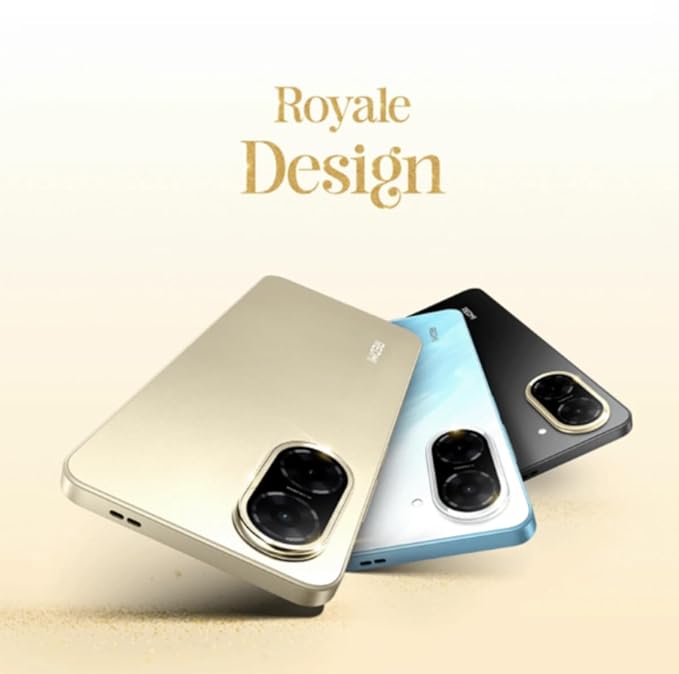Mobile Brands
Apple | Asus | Google Pixels | Honor
iQOO | Motorola |Nothing| OnePlus Oppo | Realme | Samsung | Vivo | Xiaomi


| Specifications | Details |
|---|---|
| Model Name | Xiaomi Redmi A5 4G |
| Release date | Announced & released in March 2025 (around March 21) |
| Design and Build Quality | |
| Material used Front | Likely glass (standard); specific not disclosed |
| Material used back | Plastic |
| Frame Build | Plastic |
| Dimensions | 171.7 × 77.8 × 8.3 mm |
| Weight | 193 g |
| Ergonomics | Side-mounted fingerprint sensor; lightweight for its size (193 g) |
| Water and Dust resistance | IP53 splash and dust resistant |
| Colour Options | Just Black (Midnight), Jaisalmer Gold, Pondicherry Blue (or Lake Green) |
| Display | |
| Screen Size | 6.88″ inches |
| Type | IPS LCD |
| Resolution | HD+ (~720 × 1640 or 1650 px) |
| Refresh Rate | 120 Hz |
| Pixel Density | ~263 ppi |
| Brightness | Up to 1500 nits (some sources say 450 nits in daily use) |
| Hardware and Performance | |
| Chipset | Unisoc T7250 (Tiger) octa-core, 12 nm |
| CPU | 2× Cortex-A75 @1.8 GHz + 6× Cortex-A55 @1.6 GHz |
| GPU | Mali-G57 MP1 @ ~850 MHz |
| RAM/ROM | Variants: 3 GB + 64 GB; 4 GB + 128 GB; up to 8 GB virtual RAM; microSD up to 2 TB |
| Card Slot | Dedicated microSD slot (up to 2 TB) |
| Benchmark Result | ~51/100 in comparison tests—indicative of modest entry-level performance |
| Gaming Performance | Suitable for light casual games; not for heavy 3D gaming |
| Multitasking Capabilities | Basic multitasking; 3 GB RAM is manageable for switching 2–3 apps; 4 GB is smoother |
| Heat Management | Typical for budget phones; no active cooling, moderate warmth under load |
| Main Camera Specification | |
| Number of Cameras | Dual rear cameras—32 MP main + likely secondary (e.g., depth) |
| Photo Quality | Decent in good lighting; limited low-light performance |
| Video Quality | Up to 1080p @30 fps |
| Features | AI enhancements, film filters (vintage look) |
| AI and Editing Capabilities | Basic AI camera features—film filters; typical editing tools |
| Front Camera Specification | |
| Number of Cameras | Single front camera |
| Photo Quality | 8 MP, adequate for selfies in good lighting |
| Video Quality | Likely 1080p @30 fps (standard for segment) |
| Features | AI Face unlock |
| AI and Editing Capabilities | Basic front AI enhancements |
| Software and User Experience | |
| Operating System | Android 15 Go Edition |
| User Interface (UI) | MIUI-style Go Edition—simplified, optimized for low resources |
| Pre-installed apps or Bloatware’s | Standard Xiaomi apps plus Go-optimized apps; lightweight footprint |
| Features | |
| Sensors | Side fingerprint sensor, accelerometer, ambient light sensor, compass, and AI face unlock. |
| Additional UI Features | FM radio (through headset), dual-sim support, microSD expansion, side fingerprint + face unlock, VoLTE, Bluetooth 5.2, Wi-Fi |
| Battery | |
| Battery Capacity | 5200 mAh (typical) |
| Real World uses | Strong endurance—1–1.5 days with moderate use |
| Screen-on-time | Likely ~6–7 hours (based on capacity and Go Ed. efficiency) |
| Charging speed | 15 W via USB-C (in-box charger included) |
| Wireless | No wireless charging |
| Sound | |
| Loudspeaker | Mono speaker, average output |
| 3.5mm jack | Yes, 3.5 mm headphone jack and FM radio via jack |
| Network | |
| Number of SIMs | Dual Nano-SIM with dual-4G support + microSD |
| Band Networks | Supports 2G, 3G, 4G — multiple FDD & TDD bands (e.g., B1/3/5/7/8/20/28 & B38/40/41) |
| Wi-Fi | 802.11 a/b/g/n/ac (dual-band) |
| Bluethooth | Bluetooth 5.2 |
| Positioning | GPS, GLONASS, Galileo, BDS (B1C) |
| Radio | FM radio (with headset) |
| Infrared Port | No |
| NFC | No NFC specified |
| USB | USB-C 2.0 |
| Pricing | |
| Variant | Price |
| 3 GB + 64 GB | ₹6,498 ~USD 67 / ~€75 in Indonesia |
| 4 GB + 128 GB | ₹7,498 ~USD 78 / ~€129-149 in Europe |
| Pros and Cons | |
| Pros | Cons |
|
|
| Smartphone in the same segment | |
| Smartphones | POCO C71, Redmi A4, Moto G05, Samsung Galaxy M05 (budget 4G segment) |
| Overall Rating | 8/10 |